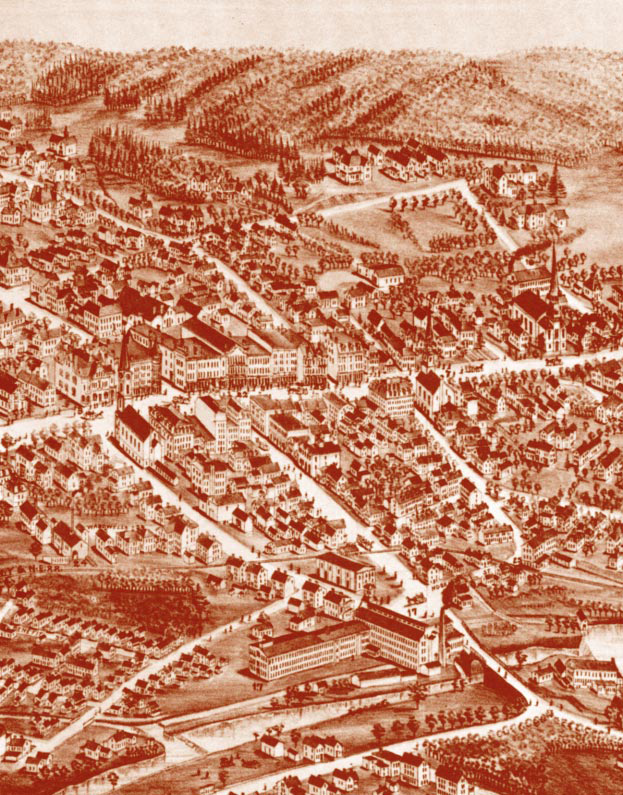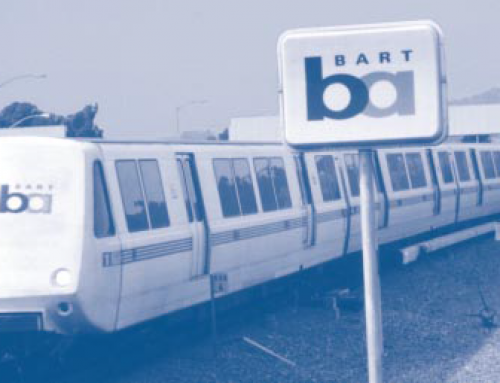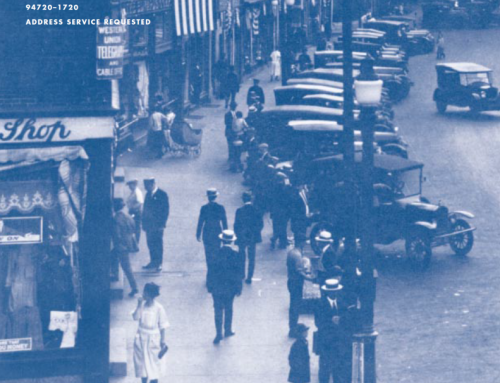A long tradition in urban planning seeks land use arrangements that reduce the need for travel, especially drive-alone travel. Current variations on this idea in the United States include jobs-housing balancing (locating jobs and housing nearby one another), transit villages (dense, mixed-use urban development with medium to high-rise housing concentrated near transit stops), and New Urbanism (a less dense, neighborhood form focusing on pedestrianism, transit, and mixed land uses).
Despite differences among these approaches, their common cornerstone for land use transportation policy is a focus on accessibility (the ability to reach valued destinations conveniently) rather than mobility (the ability to travel fast). Where valued destinations are nearby or accessible by transit, the reasoning goes, they can be accessible even without rapid and unconstrained travel. Thus traditional roadway construction and widenings, with attendant increasing travel distances and low densities, are de-emphasized in favor of development in areas of high accessibility, even at the cost of reduced travel speeds.
These ideas are controversial on two grounds. First, critics argue that implementation of these land use alternatives imposes undue limitation on people’s choices about where to live and how to travel. Second, they suggest that transportation payoffs from these alternative development forms are illusory, because any major reduction in vehicle miles traveled (VMT) is caused by household sociodemographic factors, not urban design. Moreover, they argue, it is reasonable to believe that households select residences to match their travel preferences. Once self-selection is accounted for, they say, the independent effect of urban design on travel behavior becomes virtually undetectable. In addition, where origins and destinations are close together, the reduced cost of trips may lead people to take more frequent trips, leading to an increase in VMT.
Randall Crane summed up these policy implications of New Urbanism in the Spring 1998 issue of ACCESS, calling this alternative “a wobbly foundation indeed for current transportation policy.” Crane goes so far as to say, “We must strive to avoid new urban and suburban developments that, although pretty and ambitious, might unintentionally cause more traffic problems than they solve.”
I contend that critics of these land use alternatives are ignoring existing regulatory constraints on choice. They forget that the primary aim of these proposals is to expand households’ choices in how to live and travel, not to reduce VMT. Nevertheless, neighborhood self-selection, an expression of expanded choice, can actually work to reduce VMT.
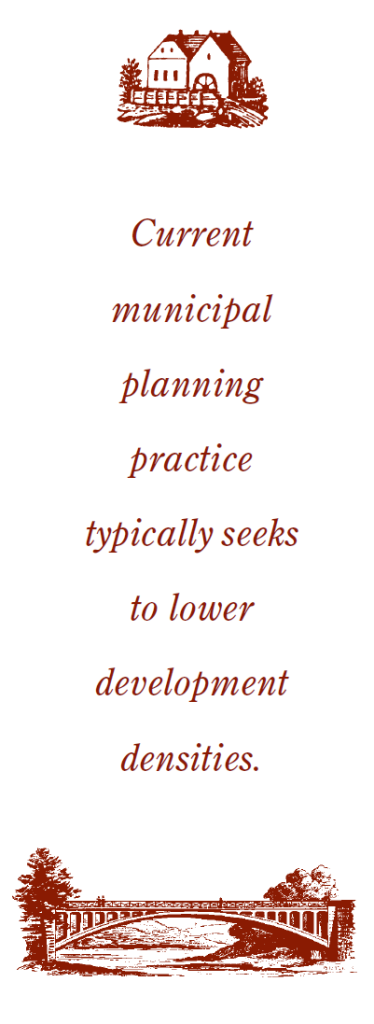 Expanding Choice
Expanding Choice
Researchers seem to agree that local government regulation works to shape metropolitan development patterns. Local policies include zoning that limits densities and mandates land use separation, transportation standards that call for wide streets and generous parking requirements, and fiscally motivated practices that restrict development of alternatives to the large lot and single-family house. But there is less acknowledgement of one implication of this regulatory regime: these policies prevent some households from getting the transportation and land use options they prefer.
Advocating accessibility-based land use alternatives does not mean more regulation forcing these designs on an unwilling market. Instead, local government regulations that currently preclude these alternatives need to be loosened, permitting the market to provide them where economically viable. Local government can prevent, allow, or facilitate higher- density development, but it is ultimately unable to require such development. A city council may desire development of a transit village at a particular site, but without a developer who sees the potential for profits the development will not occur.
Higher density development forms are typically portrayed as the products of planning and regulation of the land market, but the reality is actually the opposite: current municipal planning practice typically seeks to lower development densities. Reducing regulatory constraints is a prerequisite to the accessibility-based land use alternatives discussed here.
This argument is not intended to criticize land use regulation per se. Such intervention arose from early reformist activism aimed at unhealthful urban conditions, a concern that remains relevant today. But, reformist roots aside, the tools are broadly misused to exclude some development forms (and the population groups that would inhabit them) from selected neighborhoods. Moreover, they preclude innovation in metropolitan land use patterns. They are not the only barriers. But, as tools implemented by the planning profession, these regulations and their potential choice-constraining effects deserve more critical scrutiny by transportation and land use researchers than is currently evident.
VMT Reduction?
Many land use and transportation researchers judge alternative development forms by their capacity to reduce VMT, spur transit use, or encourage walking. These yardsticks seem reasonable tests for evaluating specific transportation claims, and such outcomes would be welcome side benefits from developing these land use forms. But scientific evidence of their likelihood must not be a precondition for removing regulatory barriers to choice.
Crane’s article in ACCESS shows how land use policies designed to bring origins and destinations closer together might actually increase VMT as the total cost per trip is reduced. Alternative development forms might well cause some congestion, if for no other reason than that population density can lead to automobile density. Is that sufficient reason to avoid them? Only if one thinks free-flow automobility should take precedence over other competing goals such as encouraging pedestrianism, improving the effectiveness of transit, or expanding the range of land use and transportation choice.
Moreover, the claim that New Urbanism might increase VMT is only speculative in the absence of empirical evidence, and it should not be employed to exclude such alternatives in areas where market demand might support them. In areas where insufficient demand exists, one hardly needs policy to keep these development forms out; the absence of profits will accomplish this much more effectively.
Neighborhood Self-Selection
Some researchers have been concerned that processes of neighborhood self-selection might lead to overestimates of the effects of urban form on travel behavior. They say that people who already wish to drive less may choose to live in areas where that is easier to do. If one accounts for this tendency in statistical analysis, it appears to be the major cause for changes in travel behavior. That is, urban design by itself seems to have little effect and should therefore not be credited.
In contrast, I want to argue that such self-selection is the prime process by which alternative development forms might affect travel. Aiming to use urban design tools to induce unwilling auto-oriented households to drive less is probably futile. It is much more promising to accommodate people whose preferences for less auto-dominated environments have been inhibited by zoning and other exclusionary regulations.
Consider, for example, the elderly household with the capacity to drive but a preference for alternatives to the car. Where transit-oriented neighborhoods are not avail- able, this household has no choice but automobile dependence; but were transit-based settlements allowed to develop, they could reduce car use.
Thus self-selection is hardly a problem invalidating the transportation relevance of alternative development forms. On the contrary, transportation planners should hope for the greatest possible self-selection into transit-oriented neighborhoods to expand the desired effects on VMT and transit use.
Of course we should try to estimate self-selection effects, but they should be interpreted differently. Where prospects of alternative development forms are restricted by regulation, reducing the regulation and thus allowing those forms will enable people with preferences for transit use, walking, or limited automobile reliance to exercise their preferences. The relevant question is not how much transportation-behavior modification can be forced by means of mandated land use changes, but rather what travel-behavior changes can occur once barriers to land use and transportation choices are lowered.
Conclusion
The debates I refer to have been shaped by the broadly held view that alternative land use and transportation proposals can be realized mainly through governmental regulation and control and are to be justified (if at all) by demonstrable reduction in VMT. But, to adopt this view, one must ignore the intricate latticework of current governmental land use and 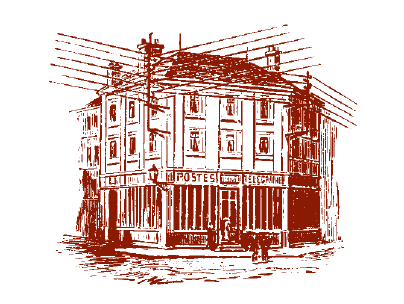 transportation regulation that imposes a development template inimical to alternative accessibility-based land use forms. Where the workings of the market might generate the sorts of land use arrangements the proponents seek, those inhibiting regulations preclude them.
transportation regulation that imposes a development template inimical to alternative accessibility-based land use forms. Where the workings of the market might generate the sorts of land use arrangements the proponents seek, those inhibiting regulations preclude them.
Accessibility-based land use policies should be assessed in a different light. Are such approaches a “shaky foundation” for transportation policy? To the extent that transportation policy focuses on the singular goal of mitigating traffic congestion, concepts like New Urbanism, jobs-housing balancing, or transit villages will probably be of little assistance. But transportation policy should be aimed at broader objectives. Among other goals, policy should seek to ensure that households are able to match their land use and transportation environments to their needs and preferences. With or without benefits of reduced highway congestion, lowered barriers to household choice would be a worthy aim indeed for U.S. transportation policy.
Further Readings
Marlon G. Boarnet and Sharon Sarmiento, “Can Land Use Policy Really Affect Travel Behaviour? A Study of the Link Between Non-Work Travel and Land Use Characteristics,” Urban Studies, vol. 35, no. 7, pp. 1155–1169. June 1998.
Randall Crane, “Travel by Design?” Access, no. 12, pp. 2–7. Spring 1998.
Robert Cervero, “Jobs-Housing Balance Revisited: Trends and Impacts in the San Francisco Bay Area,” Journal of the American Planning Association, vol. 62, no. 4, pp. 492–511. Spring 1996.
Wenyu Jia and Martin Wachs, “Parking and Affordable Housing,” Access, no. 13, Fall 1998
Jonathan Levine, “Rethinking Accessibility and Jobs-Housing Balance,” Journal of the American Planning Association, vol. 64, no. 2, pp. 133–149. Spring 1998.
Rolf Pendall, “Do Land Use Controls Cause Sprawl?” Environment and Planning B: Planning and Design. Forthcoming.

